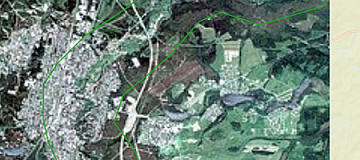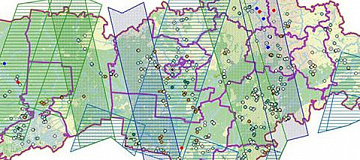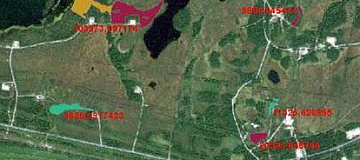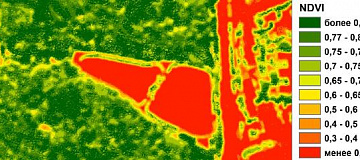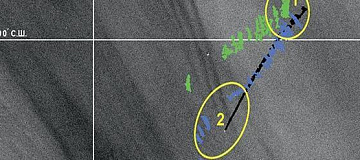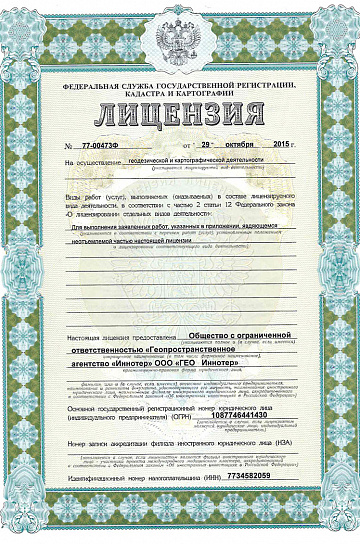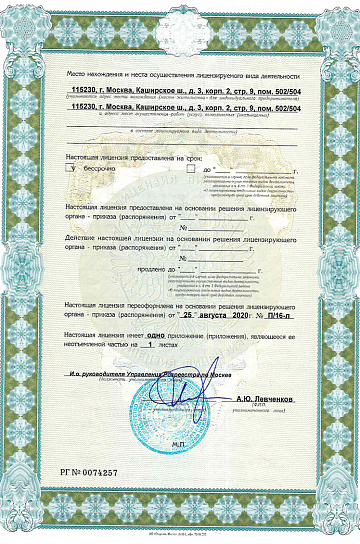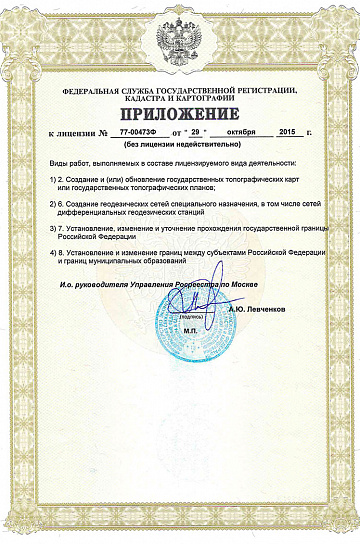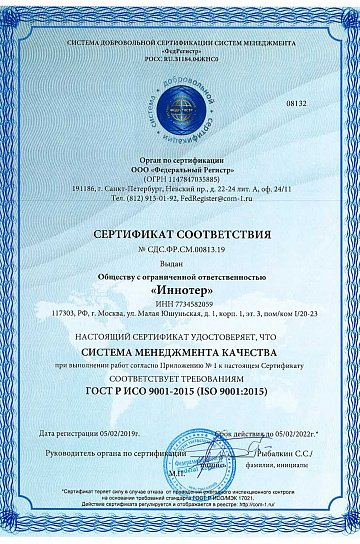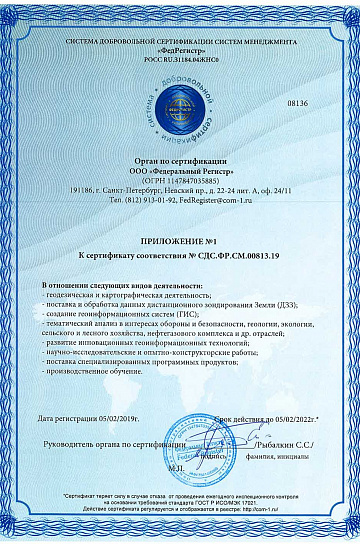
You can order from us
Prices for services
| Activities | Free / Cost per Unit of Measurement |
|---|---|
| Consultation | Free |
| Image Acquisition, Preliminary Analysis | Free |
| Ordering Images | From 300 to 600 USD per image (number of images depends on the area of the territory) |
| Work of Technical Specialists | From 70,000 rubles (calculated individually) |
| Report Compilation | From 50,000 rubles (calculated individually) |
| TOTAL COST | From 120,000 rubles (calculated individually) * |
*Price depends on the area and type of environmental monitoring, calculated individually for each client.
The cost of execution is calculated on an individual basis, taking into account a specific of task.
After receiving the task description, we calculate the cost and send you a commercial offer.
Period of execution
Harmonization of issues and applied images: from 1 to 15*Contract conclusion: 1 to 3
Receipt of images: 1 to 5**
Image processing: from 10 to 35
Deep automated remote sensing data analysis for preparation of analytical cartographic materials: from 1 to 20
Analysis of collected data and environmental assessment: from 1 to 5
Report writing: from 2 to 15
TOTAL TIME: from 20*
* working days
** from the date of receipt of 100% advance payment, if new survey is ordered, the timeframe will increase
Lead time from 20 days depends on the area and type of environmental tracking, calculated individually for each customer.
How to place an order:
Need for consultation?
Fill the form and we will contact you
Stages of service provision
The result of the provision of services
GEO INNOTER provides a report on the environmental condition of the territory, presentation materials, special maps of dynamics and forecast of natural processes, geo-referenced Tiff (Geo TIFF) images, and vector layers of identified objects in Mid/Mif format.
All results are delivered on electronic media or through the Internet via FTP servers, and textual materials are also duplicated in printed form.
In addition, based on the research conducted by GEO INNOTER specialists, the execution of forensic expertise on the environmental condition of the territory is possible.
One of the outcomes of the work is the creation of a database for display as a GIS layer or an environmental map.
Environmental maps include representations of habitat conditions and their dynamics, the relationship of biocenoses with the environment, and ecological factors and aggregates determining the living organisms' conditions and development. An environmental map compactly displays environmental characteristics influencing the state of living organisms.
The purpose of environmental mapping is to analyze the environmental situation and its dynamics, i.e., to identify spatial and temporal variations of natural environmental factors affecting the state of ecosystems. To achieve this goal, it is necessary to collect, analyze, evaluate, integrate, territorially interpret, and create a geographically accurate cartographic representation of diverse ecological information. The tasks of environmental mapping are solved both within the framework of traditional, established thematic branches with appropriate adaptation of content and by creating maps with completely original and specific content.
Schematic ecological map - a special map created during environmental monitoring and engineering-ecological surveys for the design and construction of objects in the oil and gas complex. The creation of schematic ecological maps complies with the guidelines for engineering-ecological surveys and other regulatory and technical documents for creating ecological maps. Topographic maps are used as a basis, adapted and updated for the research area. Schematic ecological maps are created in scales of 1:25000 and finer, depending on the size of the study areas with allocated exploration areas.
Content-wise, schematic ecological maps differ from standard topographic maps, which may have a simplified and generalized form. However, they display the main spatial patterns of construction objects' placement, as well as sources of emissions or pollution. The schemes are characterized by diversity and original special content.
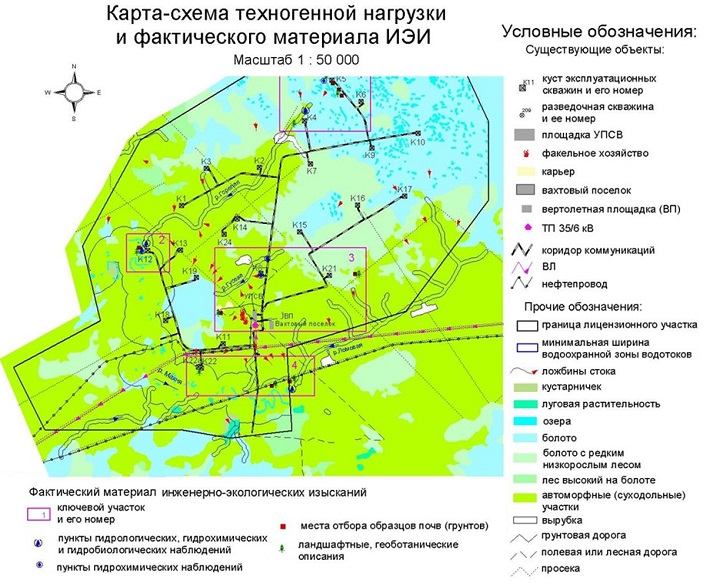
The main elements of the content of schematic ecological maps are roads, settlements, and various communications. The hydrographic network is displayed in maximum detail since water bodies represent significant barriers during construction. The maps depict lines of territory development, security zones, and the boundaries of the land plot with an allocated exploration area.
Requirements for Source Information
- Accurate geographic coordinates of the object in the required coordinate system (GEO INNOTER specialists will clarify the coordinates provided by the Customer in any convenient form).
- Images meeting the criteria of time, spatial resolution, and the required spectral channels, with RPC georeferencing.
If it is not possible to provide the specified information, provide information about the purpose of using remote sensing materials, and GEO INNOTER specialists will analyze the requirements and propose the optimal solution to the problem.
The main source for creating environmental maps is materials from satellite imagery. The specific properties of satellite imagery ensure compliance with the main requirements for environmental maps:
- The multi-aspect interpretation of data allows multifaceted and purposeful mapping of natural complexes.
- The unified photogrammetric base facilitates the alignment of characteristics of natural objects and their uniform localization in cartographic representation.
- The simultaneous availability of information for all types and directions of mapping allows mapping the current environmental conditions accurately.
- The reduced time for collecting thematic information significantly speeds up the preparation of cartographic documents by reducing the amount of labor-intensive ground surveys.
- The possibility of repeated registration of the state of natural complexes at certain time intervals allows studying the characteristics of their dynamics and development, contributing to reliable
Related services










Completed projects

Customers
FAQ
- Location of the object of interest (coordinates, district name, region, shapefile, etc.);
- Requirements for the survey period (period for which archive data can be used or the need for a new survey);
- Whether environmental monitoring has been conducted in this area;
The environmental monitoring system should accumulate, systematize, and analyze information:
- about the state of the environment;
- about the reasons for observed and probable changes in the state (i.e., about sources and impact factors);
- about the admissibility of changes and loads on the environment as a whole;
- about the existing reserves of the biosphere.
Thus, the environmental monitoring system includes observations of the state of elements of the biosphere and observations of sources and factors of anthropogenic impact.
In accordance with the given definitions and functions assigned to the system, monitoring involves three main directions of activity:
- Observations of influencing factors and the state of the environment;
- Assessment of the actual state of the environment;
- Forecasting the state of the surrounding natural environment and evaluating the predicted condition.
The information about the state of the environment obtained in the environmental monitoring system is used by the management system to prevent or eliminate negative environmental situations, assess the adverse consequences of environmental changes, as well as to develop forecasts for socio-economic development, design programs in the field of environmental development, and environmental protection.
Licenses
Warranty
Main normative legal documents defining the tasks and procedure for conducting environmental monitoring:
- Federal Law of 10.01.2002 No. 7-FZ (as of 30.12.2021) "On Environmental Protection."
- Resolution of the Government of the Russian Federation of 09.08.2013 No. 681 (as of 30.11.2018) "On State Environmental Monitoring (State Monitoring of the Environment) and the State Data Fund of State Environmental Monitoring (State Monitoring of the Environment)" (together with the "Regulation on State Environmental Monitoring (State Monitoring of the Environment) and the State Data Fund of State Environmental Monitoring (State Monitoring of the Environment)").
For each type of environmental monitoring, there is a normative legal document (For example, for subsurface monitoring: Regulation on the Procedure for Conducting State Monitoring of the Subsoil Status of the Russian Federation (approved by the order of the Ministry of Natural Resources of Russia dated 21.05.2001 No. 433)).
We guarantee 100% service quality. By cooperating with GEO Innoter specialists, you eliminate risks and losses!
The presence of qualified personnel with extensive experience in specialized software allows us to guarantee timely and high-quality performance!













